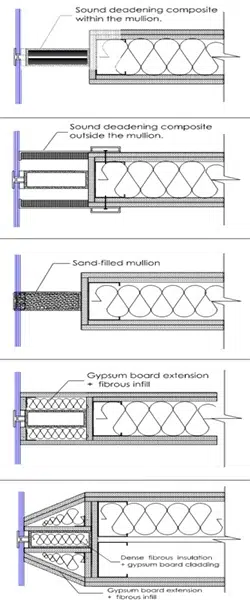The Importance of Façade Acoustics in Building Design
In the vast and intricate world of architecture, one aspect that often does not get the attention it deserves is the acoustic performance of a façade. This element, though seemingly insignificant, plays a pivotal role in shaping the sound environment within a building. The internal acoustic conditions, largely determined by the façade, can have a profound impact on the comfort levels of the occupants, influencing their productivity and overall experience within the space.
Designing for Acoustic Comfort
One of the primary factors in acoustic design is the penetration of external noise into a building, also known as noise ingress. This becomes especially critical in bustling urban environments, where the levels of road noise are typically high. To address this issue, architects and designers can refer to the British Standard BS 8233. This comprehensive guide provides valuable insights into acceptable noise levels in different types of buildings and offers reliable methods for predicting and measuring noise ingress.
Using Acoustic Modelling to Inform Façade Design
In order to fully understand and anticipate the impact of noise on a building’s design, acoustic engineers often turn to outdoor 3D acoustic modelling. This advanced tool is indispensable in the field of acoustic design, enabling engineers to evaluate the effectiveness of various design strategies. With this information at their disposal, they can make informed decisions about the choice of materials and configurations, optimizing the design for superior acoustic performance.
Understanding the Weighted Sound Reduction Index (Rw)
Central to this context is the weighted sound reduction index (Rw), a single-number quantity that encapsulates the airborne sound insulation of a building element, such as a window or door, in a laboratory setting. This value is used for selection or design purposes. It does not take into account any site particularities, such as workmanship, or how the element is connected with other elements, e.g. slabs, or junction details that can lead to sound flanking. The Rw value solely describes the main element’s sound insulation performance in an ideal, controlled environment.
The Role of the Spectrum Adaptation Term (Ctr)
Often, working alongside Rw is the spectrum adaptation term (Ctr), which provides a more accurate indication of sound insulation performance in the presence of low-frequency noise, such as traffic and music noise. The combined value (Rw+Ctr) is frequently used in specifications and regulations, offering a more comprehensive measure of a building element’s acoustic performance.
Impact of Glazing Configurations on Acoustic Performance

The acoustic performance of a window or façade can be significantly influenced by different glazing configurations. Architects have a range of options at their disposal to enhance the sound insulation performance of a façade. These include the use of laminated glass, which incorporates a layer of plastic for additional sound insulation; increasing the gap between glass panes; using higher thickness panes; or employing triple glazing. Each option presents its own set of advantages and trade-offs in terms of acoustic performance, thermal performance, and cost, making it crucial to consider all factors before making a decision.
Addressing Internal Sound Transmission Issues
Additionally, in the complex realm of façade design, internal sound transmission presents certain challenges. One such issue is flanking transmission, where sound bypasses an insulating element through paths such as mullions and transoms in curtain walls. This can pose a significant risk to the acoustic performance of a building. However, these concerns can be mitigated through meticulous design and the use of appropriate materials such as infills, or bespoke configurations, ensuring that the building achieves the desired level of sound insulation.
Balancing Noise Ingress and Overheating
Striking the right balance between preventing overheating and controlling noise ingress in façade design presents an acoustic challenge. Solutions like opening windows for ventilation can increase noise ingress. Meanwhile, keeping windows closed to limit noise can contribute to overheating. This delicate balance demands careful consideration in the design process to ensure both thermal and acoustic comfort. This is especially relevant as net-zero building goals become more popular, making active cooling a last resort for addressing overheating. It is a fine line, but with thoughtful planning and design, it is possible to achieve a harmonious trade-off between thermal performance and noise management.
Maintaining Acceptable Indoor Noise Levels
Achieving acceptable noise levels within a building is a paramount objective that requires design and execution. This is not just a matter of comfort, but also of health and well-being. High ambient noise can lead to stress, sleep disturbance in residences, and reduced productivity in workplaces. By focusing on acoustic considerations and noise control methods, ambient sound can be maintained at comfortable levels.
Acoustics: An Integral Aspect of Façade Design
In conclusion, the role of acoustics in the design of building envelopes is of utmost importance. By effectively managing factors such as Rw, Ctr, noise ingress, and flanking transmission, we can create buildings that are not only aesthetically pleasing but also acoustically comfortable. This underscores the importance of involving an acoustic engineer from the early stages of design until the tendering stage, ensuring the creation of spaces that resonate with comfort and tranquillity.














